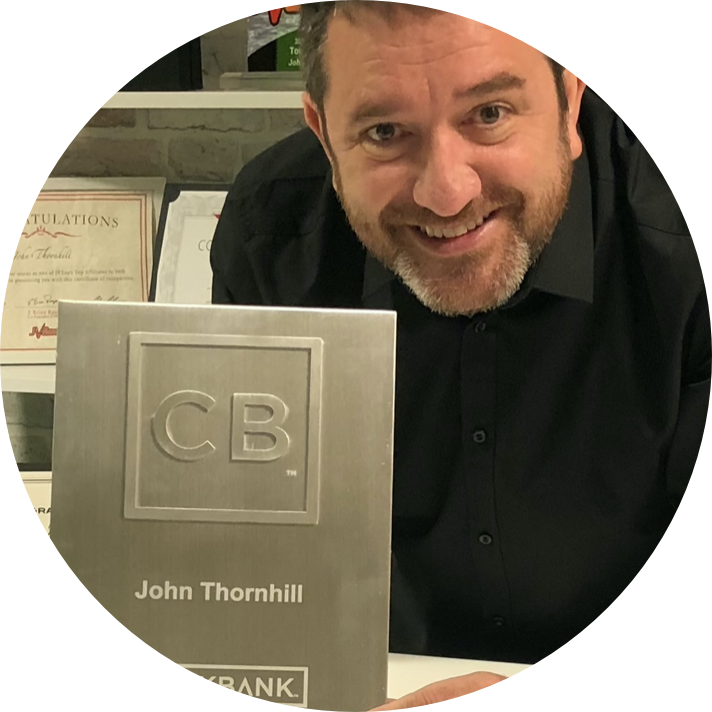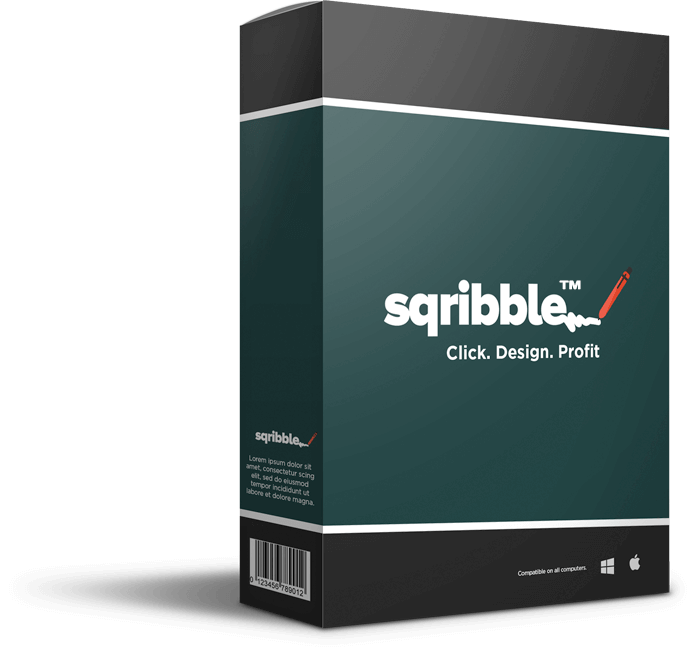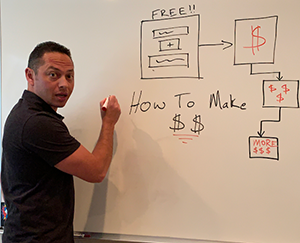The Digital Tools Every Business Owner Needs & The Exact Ones I Use written by John Jantsch read more at Duct Tape Marketing
The Duct Tape Marketing Podcast with John Jantsch In this episode of the Duct Tape Marketing Podcast, I decided to go solo and talk about a topic that’s been on my mind for a while: the importance of selecting the right tools for your business. In the constantly evolving landscape of marketing, strategies and tools […]
The Digital Tools Every Business Owner Needs & The Exact Ones I Use written by John Jantsch read more at Duct Tape Marketing
The Duct Tape Marketing Podcast with John Jantsch
 In this episode of the Duct Tape Marketing Podcast, I decided to go solo and talk about a topic that’s been on my mind for a while: the importance of selecting the right tools for your business. In the constantly evolving landscape of marketing, strategies and tools are in a state of perpetual flux. Staying ahead of the game and making strategic tool choices is the key to achieving remarkable success.
In this episode of the Duct Tape Marketing Podcast, I decided to go solo and talk about a topic that’s been on my mind for a while: the importance of selecting the right tools for your business. In the constantly evolving landscape of marketing, strategies and tools are in a state of perpetual flux. Staying ahead of the game and making strategic tool choices is the key to achieving remarkable success.
Listen in as I uncover the significance of choosing the right tools for your business. Discover how focusing on a select set of tools, rather than constantly chasing new technologies, can lead to enhanced efficiency, productivity, and marketing excellence. Learn how proficiency with your existing tools can set you on the path to success as we dive into the world of tool selection and its impact on your business.
Key Takeaway:
During this episode, we talked about the importance of your tool’s usage for your business. In today’s world, it’s easy to fall into the trap of constantly seeking new tools and technologies. We believe in the importance of establishing and mastering a core set of tools, and become proficient in their use, so you can achieve greater efficiency, productivity, and marketing success. Avoid tool leapfrog and the distraction it brings; instead, invest your time and energy into establishing your primary set of tools.
Topics I cover
- [01:08] The trap of constantly seeking new tools
- [01:54] The distraction of new technology
- [02:38] The Mantra: “Do with less, but do it brilliantly”
- [03:35] Duct Tape Marketing core tool set
- [04:22] Newsletter tool
- [05:06] Project management tool
- [06:37] Google workspace and its advantages
- [09:46] How to be more disciplined with your tools
More about Me:
- Connect with John Jantsch on LinkedIn
More About The Agency Certification Intensive Training:
Get Your Free AI Prompts To Build A Marketing Strategy:
Like this show? Click on over and give us a review on iTunes, please!
Speaker 1 (00:08): Hello and welcome to another episode of the Duct Tape Marketing Podcast. This is John Jantsch and no guest. Today. I’m going to do a solo show. It’s been way too long. It’s kind of more of a public service announcement, if you will, and I’m going to title this public service announcement. Stop Playing Tool Leapfrog. You know what? Entrepreneurs love tools, new tech, shiny stuff. I work with a lot of marketing agencies. They really love new tools and they often justify that there’s efficiencies gained. I mean, the competitive advantages or even the first mover shtick that you hear people talk about in reality, however, oftentimes a new tool or switching to a new version for a new feature here and there is mostly a reason for distraction. So they don’t have to get down to the real tasks of doing the hard work. Ever fallen into that category, you delude yourself into believing that all you need is this next new tool that’s going to solve all the problems.
(01:08): I know I’m sounding a little harsh today, but I mean, because fallen prey to it many times. I remember back in college when I’d have a big test coming up, all of a sudden I just had to clean my room for the first time in months. And I think it’s a little like that. We put off what we know we need to do because maybe it’s the hard work of running our business because we think this new thing is going to be more attractive or it’s going solve whatever it is we’re trying to solve at that moment. So here’s what I tell people all the time. Lock down on a core set of tools that you must use, get good at using them, and then just go to work and stop looking around for the next new thing. Now, I’m not saying that you can’t keep your head up looking for ways to improve the tool stack.
(01:54): I mean, look at how much comes along, how many tools that we use today that we didn’t use five years ago. But what I’m saying is don’t flip around because someone adds a new feature. Every single tool, like let’s say you’re looking at a C R M tool and you’re saying, oh, but these guys now have AI baked in or something like that. Every single one of those tools that is out there is going to have AI baked in, I mean, or whatever the next feature is or the torian is going to be. I often tell people when they say, well, what’s the best tool to do this with the one you know how to use? Because I think that that’s what makes one tool better than another is that you get good at using it, you understand some of the more advanced features, and so consequently, you get a lot more of the efficiencies that are promised.
(02:38): I mean, most of us are probably only using 10% of most of the tools. I mean, we use monday.com for project management, and I know that it does so much more we use, but if I’m leapfrogging around jumping to other tools, I’ll never get good enough at using that tool to really realize the promise that the great sales page showed us. And I think switching tools frankly has a real and measurable cost that probably outweighs any gain. I mean, you think about even just a little thing when a tool updates their user interface and it’s like, oh, where is everything? I have to relearn it again. I mean, that’s a real cost, I think involved in switching tools. Here’s my mantra on tools, do with less, but do it brilliantly. I already talked about, I work with multiple marketing agencies and I can’t tell you how many of ’em have three or four tools that do the exact same thing.
(03:35): This one was going to be better, and then they look at their credit card statement and they’re spending thousands of dollars a month on tools that they’re not even using. But one day sounded like a good idea. Okay, enough of the preaching. Now I’m just going to go straight into what I think. Well, it’s my core tool set in case you’re interested, but I think they’re also the core tools that most businesses need to run their business effectively. Alright, the first one is A C R M tool, customer Relationship Management. In case you didn’t know that, that’s what C R M stood for. We use Active Campaign. Now, the purpose of a tool like this is obviously to keep track of your customers, have some history of your communication with them, even having purchase history baked in, knowing what pipeline you’ve got, who needs to be contacted, nest.
(04:22): If you’ve got a newsletter, it’s a great tool to send out to your list or to people who bought a certain product. It’s a great way to promote that new product or the next product to them. I love to campaign. I’ll just give it a shout out because, and we recommend it to all our clients. It’s very affordable option, frankly. I mean, some of these tools can get up to being thousands of dollars a month, easy to use, powerful. It can do lots of things. My favorite is something called automations where you can make stuff happen automatically. So that’s it for C R M, internal communications, one of the things that we do from as a practice in my business is we don’t email each other, meaning team members in the business because email just, well, first off, it’s a sinkhole for a lot of people.
(05:06): It’s very hard to keep track of or organize things that have gone on or maybe are going on for weeks that you’re talking about next to. It’s like, what was that threat or who was on that threat? So we use Slack. I mean, I know many, many people do, but it’s kind of our internal communication tool, and I think anybody has any correspondence with, I mean, there are lots of other good uses for it as well, but anybody who does any kind of communication internally I think needs to have a tool like that. I mentioned Project Management Tool Monday. This is one of those categories that really has lots of, they all do the same thing almost. It’s really more of how they do it or what it looks like or what you get used to using. But I think having project management is absolutely both for internal and external.
(05:49): I mean, we put our clients on project management. We have any project that we’re doing internally, say for marketing, we’ll be in a project management tool. So it’s a great way to keep it all in one place, keep all the resources in one place, keep all the communication in one place. Certainly timelines and project deadlines, tasks, things like that. Research and strategy chat. G P T is a great tool for that. I know there’s lots of people out there promoting it for lots of other things like baking bread or whatever it can do. We use it for research primarily pretty much every day. In fact, I would say that AI is increasingly not going to be seen as a tool. It’s really a layer. It’s going to be a layer that’s baked into every tool and Zoom for our meetings, which is the next tool that having some sort of a meeting, online meeting tool with AI baked into it, and Zoom just offered that.
(06:37): So there again, I know lots of people were going to note takers like Otter and I don’t know, they show up on my Zoom meetings all the time. So it was only a matter of time before Zoom actually baked that in as well. Collaboration and file management, I think it’s hard to go wrong with Google Workspace. I know a lot of people use a lot of other tools, but for us, I mean that’s our email, that’s our calendar. That’s certainly something we’re in every day using Sheets and using docs, and even using slides now because it’s such a great tool to collaborate, especially when you have remote teams like most of us do today. It’s a great way to be able to collaborate and file, manage. I mean, we have our entire file structure so that theoretically we can find things very easily rather than having them all of our files on various people’s laptops or whatever.
(07:27): They keep those things on. Web hosting obviously is another part of the tool stack. I love pressable. We do use the agency plan, so we have maybe 20 client websites that are hosted on those at any given time as well. I tell you, in the world of web hosting and domain registration, I mean, there are lots of cheap options out there, but don’t expect any service from those. One of the things I really love about Pressable is their service is awesome. There’s lots going on in the world of hacking websites these days, and so having somebody that you can call up and say, oops, this happened, help us fix it, is pretty darn awesome. We use Calendly today. I think a meeting scheduler is certainly a tool that everybody’s gotten used to. There’s going to be lots of feature creep in this category of tools, doing this or that, but having an easy way for somebody to just pick a time and schedule certainly for sales is awesome.
(08:21): But really I do it for my podcast. I schedule my podcast that way. People say, yeah, I want to be on the show. I send ’em a link. They find a time that I have kind of predetermined for when I do my recordings and works out beautifully without a whole bunch of back and forth. You do need some sort of accounting software. Obviously. I was going to give a shout out to QuickBooks online, but it’s really just, I’ve been on it forever and 20 years of financial data is buried in there somewhere, and there are lots of other options. I hear great things about Xero. FreshBooks is another one that I know a lot of people use for various aspects of that as well. That’s kind of the core stack now for our clients. And I have a network of fractional CMOs. We recommend a lot of other tools, obviously for doing fulfillment of the work.
(09:07): Tools like Agency Analytics, SEMrush, we have great relationship with Desk Team 360 that does all of our web design work. So I could go on and on and on, but then we’d be getting into tool overwhelm again. And so my main point here was lock down a core stack stop switching, stop leapfrogging because you’re just going to burn up a lot of time and energy and probably end up at the same place. I actually was discussing this with somebody on LinkedIn and they had an interesting approach to this because he said, yeah, I was really falling prey to this as well. And you know how a lot of plans, software plans will offer, you can pay monthly or you can pay
Speaker 2 (09:45): Annually.
Speaker 1 (09:46): So he was saying, if I commit to a plan or to a tool, I always take the annual payment because then it just kind of locks me in. Like, I can’t leave after three months because I’ve already paid for the whole year. So that might be one way to give yourself some disciplines. It’s kind of like signing up for months in advance and it kind of forces you to do to the work to get ready for. So that’s it today. Hopefully this public service type message was useful. If you’ve got any questions, I’m always available, John at Duct Tape Marketing. Gosh darn. We love those reviews over there on Apple or wherever it is that you review your favorite podcasts and spread the word. If I say something useful here, share it with five friends. That’s my request today. Share this show with five friends who have a little bit of a problem with buying too many tools. That’s my request for today. Take care, and hopefully we’ll run into you
Speaker 2 (10:37): One of these days out there on the road.
Sign up to receive email updates
Enter your name and email address below and I’ll send you periodic updates about the podcast.
Recommended Story For You :

How To Make $3493 Commissions Without Doing Any Selling

Successful dropshippers have reliable suppliers.

People Think I Use A Professional Voiceover Artist. NO! I Just Use Speechelo!

Make Money Testing Apps On Your Phone Or Tablet

Make More Money or Lose Everything

Sqribble Is The ONLY eBook Creator You’ll Ever Need.

Work & Earn as an Online Assistant

Create Ongoing Income Streams Of $500 To $1000 Or More Per Day

It's The Internet's Easiest Side Business.


